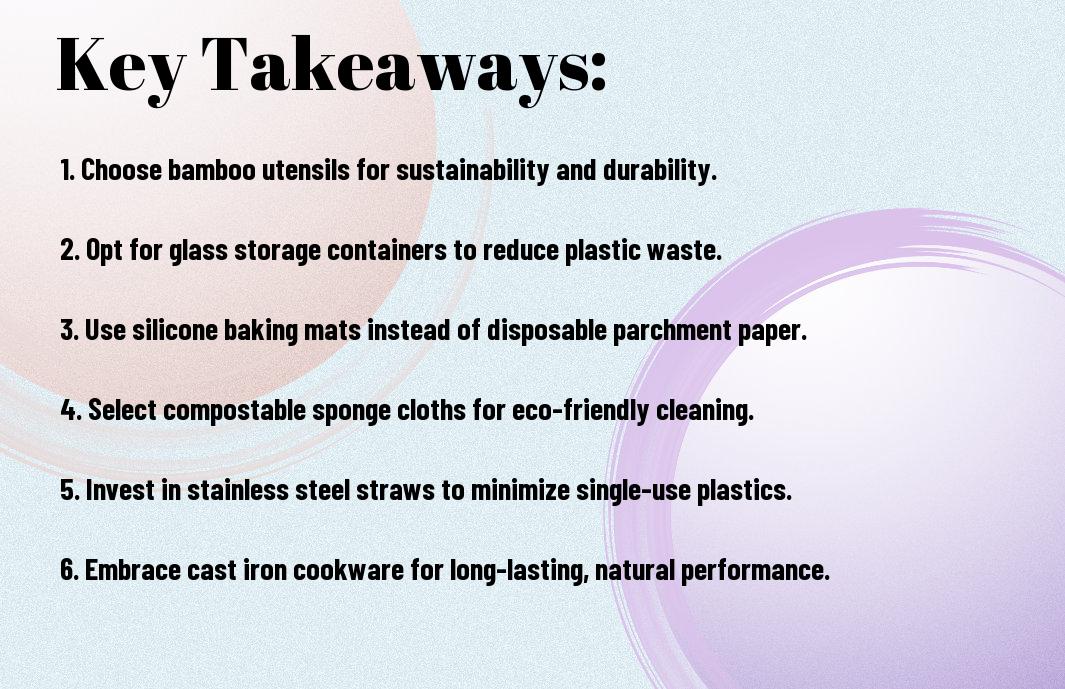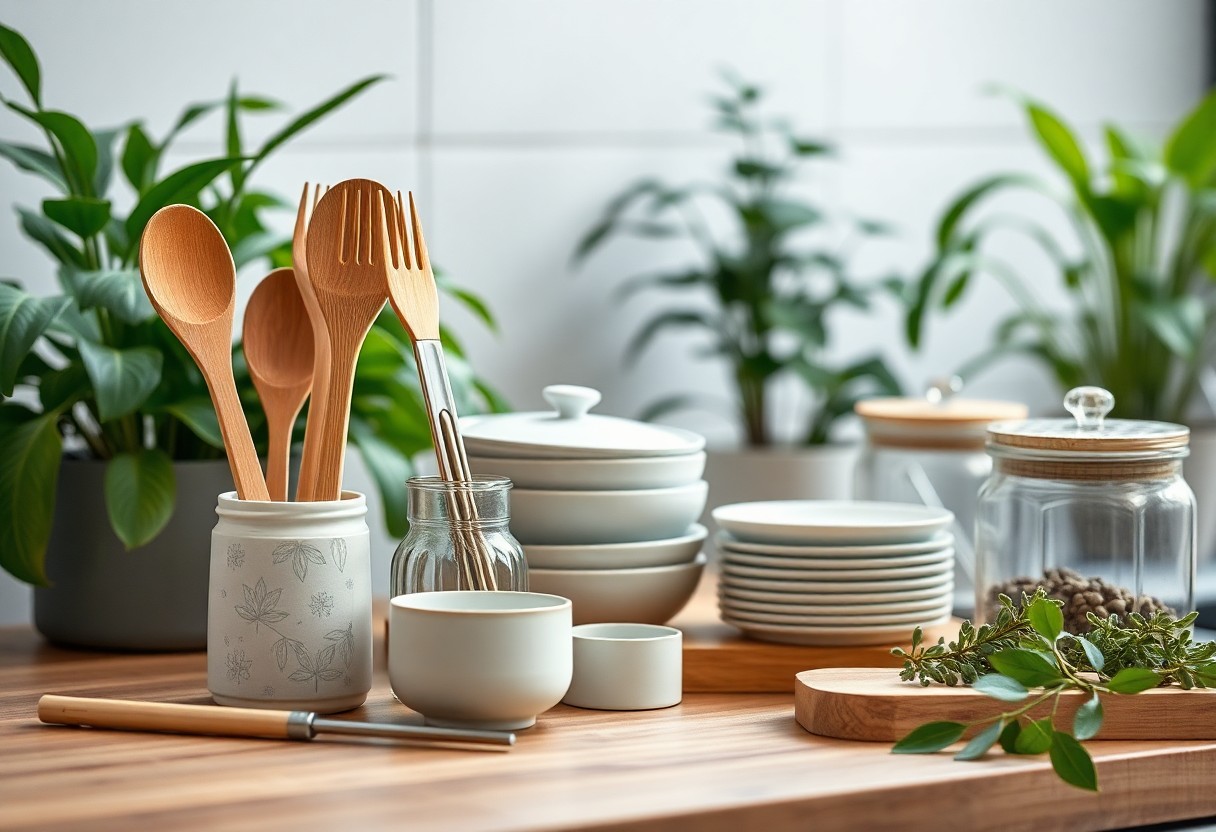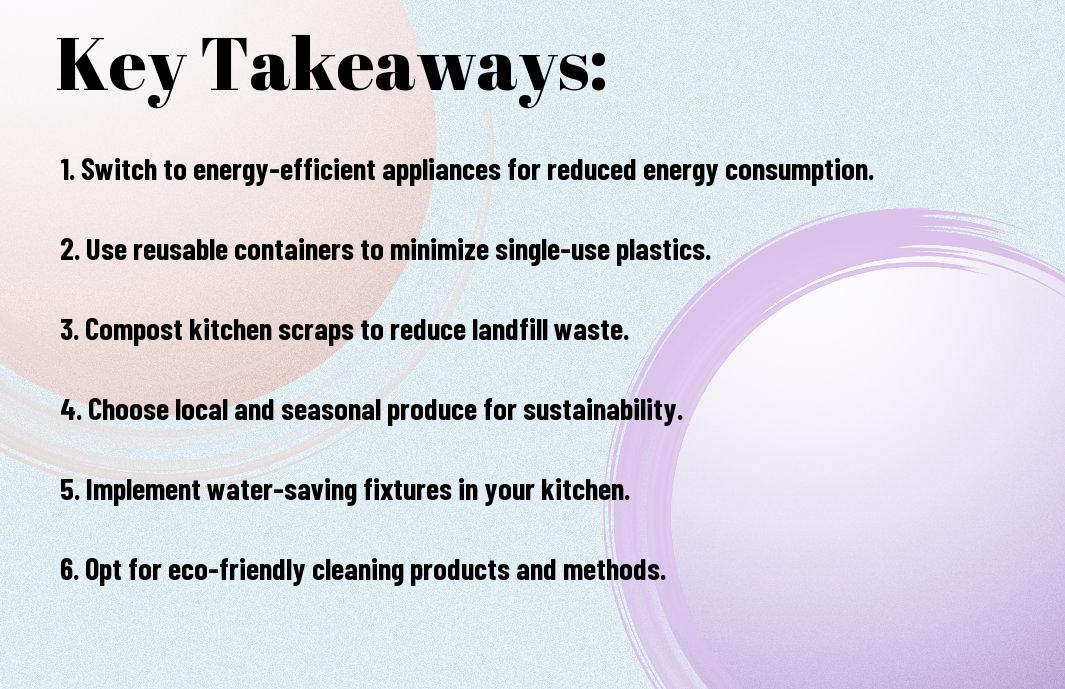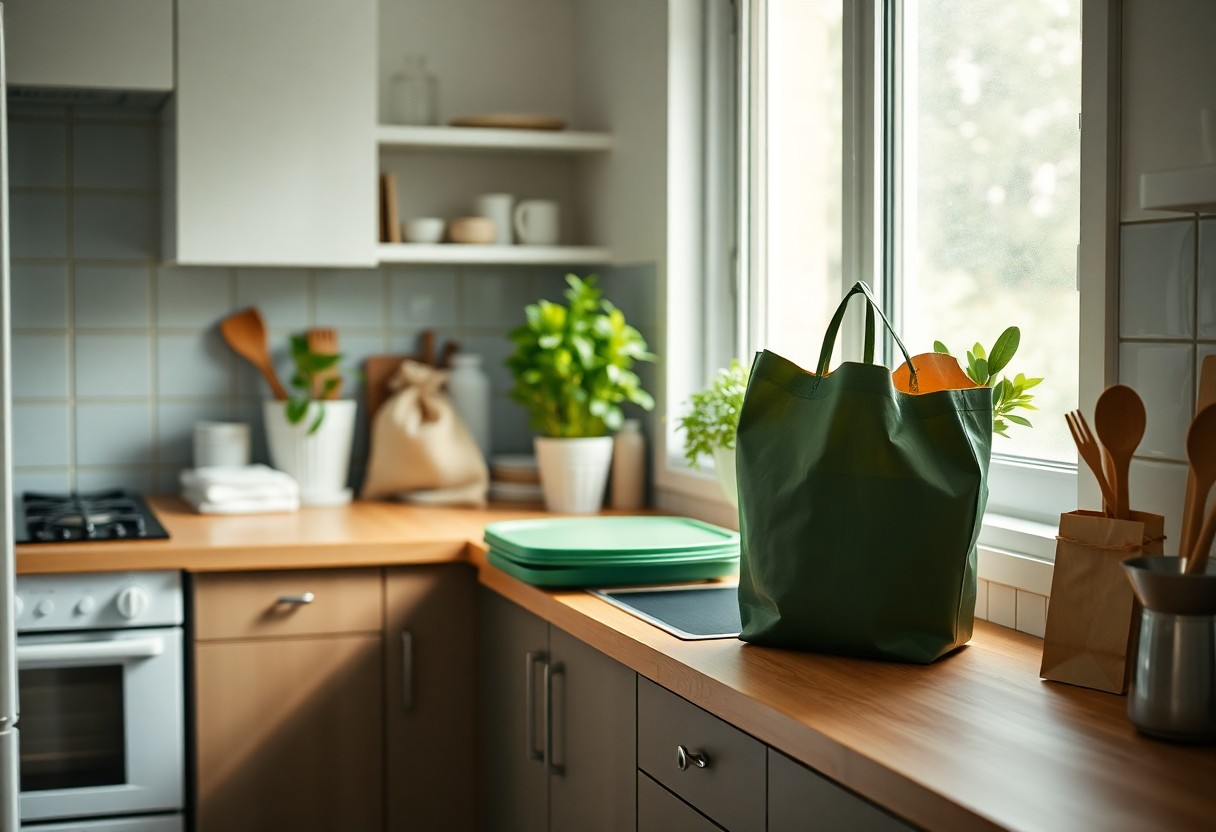As you strive to reduce your environmental footprint, your kitchen is a great place to start. You can make a significant impact by incorporating sustainable products into your cooking routine. You’ll be surprised at the variety of eco-friendly options available, from reusable utensils to non-toxic cookware. By choosing these products, you’ll not only be helping the planet, but also improving your health and cooking experience. In this post, you’ll discover the top sustainable kitchen products to enhance your cooking while minimizing waste.
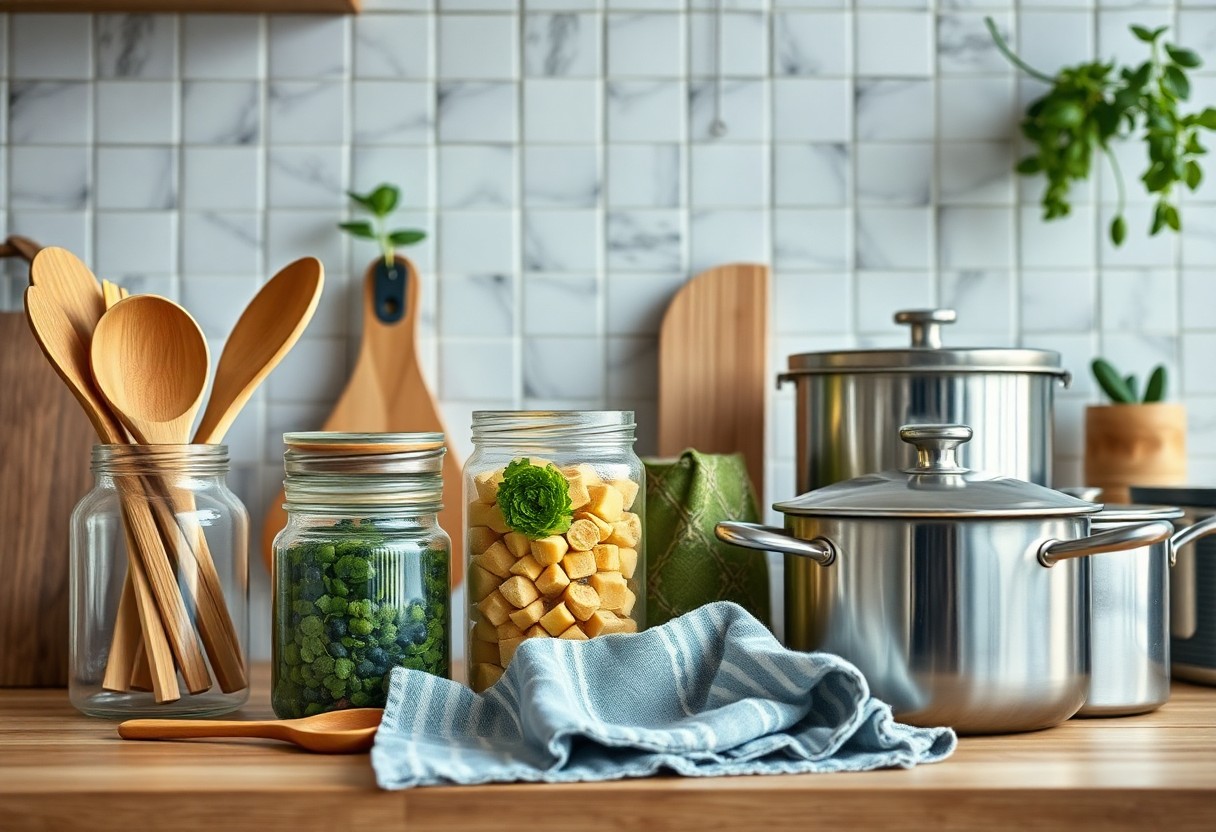
Key Takeaways:
As far as choosing sustainable kitchen products for cooking, there are several options available that can make a significant impact on reducing waste and promoting eco-friendly practices. Here are some key points to consider:
- Investing in reusable products such as beeswax wraps, silicone storage bags, and stainless steel containers can help reduce single-use plastic waste in the kitchen.
- Choosing energy-efficient appliances and cookware, such as induction cooktops and cast iron skillets, can help reduce energy consumption and lower utility bills.
- Opting for non-toxic and BPA-free cookware and utensils, such as ceramic and bamboo products, can help minimize the risk of chemical contamination and promote a healthier cooking environment.
- Using compostable and biodegradable products, such as paper-based packaging and coconut fiber scrubbers, can help reduce waste and support a more circular economy.
- Supporting locally sourced and sustainable food systems, such as farmers’ markets and community-supported agriculture programs, can help promote environmental stewardship and support the local economy.
Eco-Friendly Cookware
Your kitchen deserves the best, and that includes eco-friendly cookware that is both durable and sustainable. You can choose from a variety of options that are better for the environment and your health.
Non-Stick Pans and Pots
Pots made from non-stick materials are a great alternative to traditional cookware, offering easy food release and cleaning. You can opt for PFOA-free non-stick pans that are safer for your family and the environment.
Cast Iron and Stainless Steel Options
Steels like stainless steel and cast iron are excellent choices for eco-friendly cookware, as they are long-lasting and can be passed down to future generations. You can use them for various cooking methods, from stovetop to oven cooking.
Stainless steel cookware is a great investment for your kitchen, as it is resistant to scratches and corrosion, and can withstand high temperatures. You can use it for cooking a variety of dishes, and it is easy to clean and maintain, making it a convenient option for your busy lifestyle.
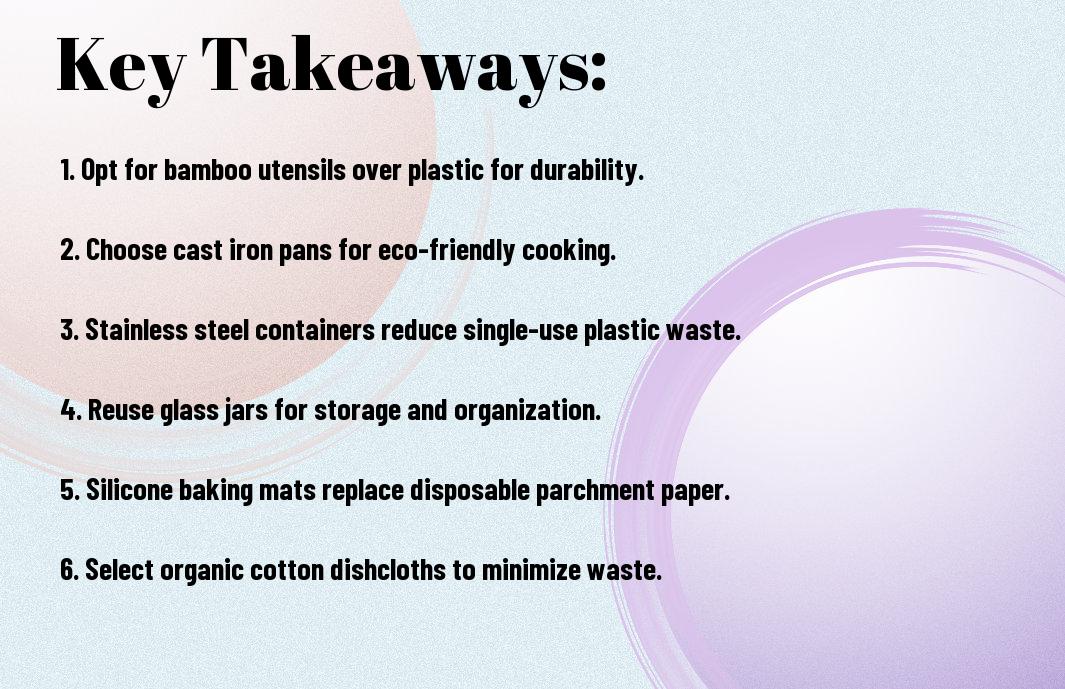
Sustainable Kitchen Tools
Some of the most effective ways to reduce waste in your kitchen involve switching to sustainable tools, which can greatly reduce your environmental footprint. You can make a significant impact by choosing tools that are durable, long-lasting, and made from eco-friendly materials.
Wooden Utensils and Cutting Boards
Around your kitchen, you’ll find that wooden utensils and cutting boards are a great alternative to plastic ones, as they are biodegradable and can be easily replaced if needed, allowing you to maintain a sustainable cooking environment.
Reusable Silicone Bags and Containers
After making the switch to eco-friendly tools, consider incorporating reusable silicone bags and containers into your kitchen routine, which can help you reduce single-use plastics and keep your food fresh for a longer period, making your kitchen more sustainable.
Plus, when you use reusable silicone bags and containers, you’ll find that they are easy to clean, dishwasher safe, and can withstand extreme temperatures, making them a practical and sustainable choice for your kitchen, allowing you to store food safely and reduce waste in the long run, and you’ll be able to enjoy the benefits of a more sustainable kitchen.
Energy-Efficient Appliances
Many of your kitchen’s energy consumption comes from appliances, so opting for energy-efficient ones is a great step towards sustainability. You can find a variety of eco-friendly options at Eco Friendly Kitchen Products | Zero Waste, helping you to reduce your carbon footprint.
Induction Cooktops and Electric Ovens
Above all, induction cooktops and electric ovens are great alternatives to traditional gas stoves, offering faster cooking times and reduced energy consumption, making them a great choice for your kitchen.
Solar-Powered and Gas Stoves
Cooktops like solar-powered and gas stoves provide you with alternative cooking methods, allowing you to reduce your reliance on electricity and explore more sustainable options for your cooking needs.
But when considering solar-powered and gas stoves, you should also think about the overall cost and practicality for your specific situation, as they may not be suitable for everyone, and it’s important to weigh the benefits and drawbacks before making a decision for your kitchen.
Water Conservation
All your efforts to reduce water waste in the kitchen can make a significant impact on the environment. By implementing a few simple changes, you can conserve water and reduce your water bill.
Low-Flow Faucets and Water Filters
Above all, installing low-flow faucets and water filters can greatly reduce water consumption in your kitchen. You can choose from a variety of low-flow faucets and water filters that are designed to save water without compromising performance.
Grey Water Systems and Dishwashers
Similarly, faucets with aerators can also help reduce water flow, but grey water systems and dishwashers can take your water conservation to the next level. You can consider installing a grey water system to reuse water from your sink for irrigation or other non-potable purposes.
Plus, when shopping for a new dishwasher, look for one with a low water consumption rate, as this will help you save water and energy. You can also optimize your dishwasher’s performance by running full loads and using the eco-cycle, which can help reduce water and energy consumption even further.
Food Storage and Waste Reduction
Now that you’re looking to reduce your kitchen’s environmental impact, it’s time to focus on storage and waste reduction. You can make a significant difference by choosing the right products for your kitchen.
Glass Containers and Mason Jars
Meanwhile, Mason-like containers offer an excellent alternative to plastic storage solutions, keeping your food fresh and your kitchen organized. You can use them to store leftovers, dry goods, and even bake dishes, making them a versatile addition to your kitchen.
Compost Bins and Recycling Solutions
On the other hand, proper waste management is necessary for a sustainable kitchen. You can invest in a compost bin to turn food scraps into nutrient-rich soil for your garden, and implement recycling solutions to minimize your waste output.
Glass containers can also be used in conjunction with your compost bin and recycling solutions to further reduce your waste. You can store your compostable materials in glass containers until they’re ready to be added to the bin, and use glass jars to separate recyclables from non-recyclables, making it easier for you to manage your kitchen waste effectively.
Sustainable Food Choices
Despite the variety of options available, making sustainable food choices can be challenging. You can start by considering the environmental impact of your food selections, and exploring alternatives that support your values.
Locally Sourced and Organic Produce
The key to reducing your carbon footprint is to opt for locally sourced and organic produce, which reduces transportation emissions and supports local farmers, allowing you to make a positive impact on your community and the environment.
Plant-Based and Minimal Packaging Options
For a more sustainable kitchen, you can explore plant-based and minimal packaging options, which not only reduce waste but also promote healthier eating habits, enabling you to make informed choices that benefit your health and the planet.
This approach to sustainable food choices extends to the way you shop, with many stores now offering bulk purchasing options and refillable containers, allowing you to reduce your reliance on single-use plastics and minimize packaging waste, which you can then implement in your own kitchen, making a significant difference in your daily life and contributing to a more sustainable future.
Summing up
Now that you have explored the top sustainable kitchen products for cooking, you can make informed choices for your kitchen. You will reduce your environmental impact by incorporating these eco-friendly products into your daily cooking routine. Your sustainable kitchen will not only benefit the planet, but also enhance your cooking experience with innovative and efficient tools.———-FAQ
Q: What are the benefits of using sustainable kitchen products for cooking?
A: Using sustainable kitchen products for cooking offers numerous benefits, including reducing waste, conserving natural resources, and minimizing the environmental impact of cooking. Sustainable kitchen products, such as bamboo utensils, silicone baking mats, and cast iron cookware, are designed to be durable and long-lasting, reducing the need for frequent replacements and the waste that comes with it. Additionally, many sustainable kitchen products are made from eco-friendly materials that are biodegradable and non-toxic, making them a healthier choice for both people and the planet.
Q: What are some of the top sustainable kitchen products for cooking, and how do they compare to traditional products?
A: Some of the top sustainable kitchen products for cooking include bamboo cutting boards, beeswax wraps, and stainless steel cookware. These products offer a number of advantages over traditional products, including durability, non-toxicity, and eco-friendliness. For example, bamboo cutting boards are resistant to knife marks and can withstand high temperatures, making them a long-lasting alternative to traditional wooden cutting boards. Beeswax wraps, on the other hand, provide a natural and reusable alternative to plastic wrap, while stainless steel cookware offers a durable and non-toxic alternative to non-stick cookware.
Q: How can I incorporate sustainable kitchen products into my cooking routine, and what are some tips for getting started?
A: Incorporating sustainable kitchen products into your cooking routine is easier than you think. Start by assessing your current kitchen setup and identifying areas where you can make changes. Consider replacing traditional products with sustainable alternatives, such as swapping paper towels for reusable cloth towels or switching to eco-friendly cleaning products. You can also make a few simple changes to your cooking habits, such as using a Dutch oven instead of a slow cooker or opting for recipes that use fewer ingredients and less energy. Additionally, look for products that are certified by organizations such as the Forest Stewardship Council (FSC) or the International Organization for Standardization (ISO), which ensure that products meet certain standards for sustainability and environmental responsibility.
